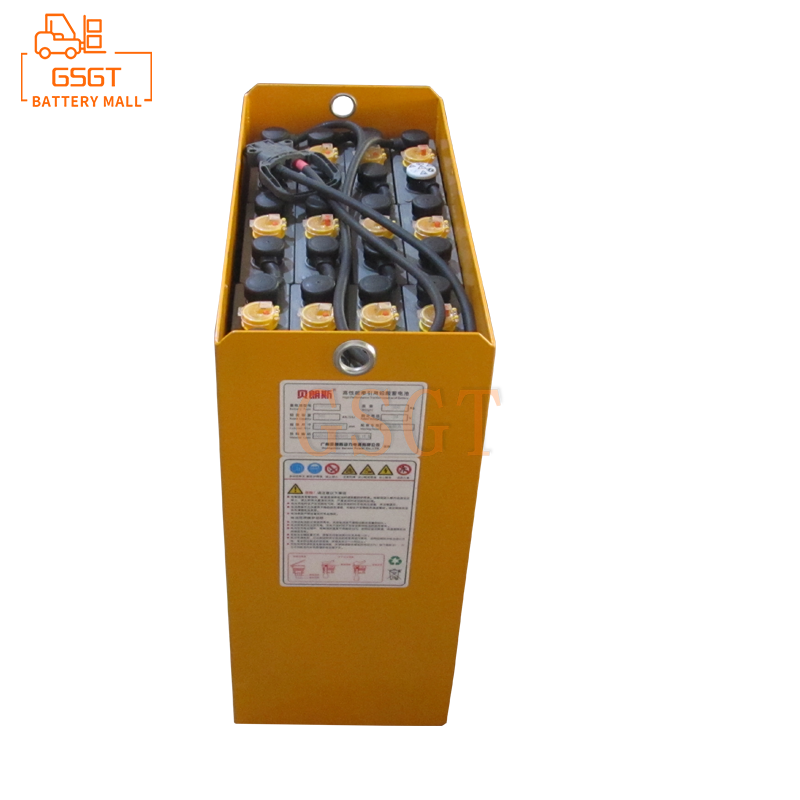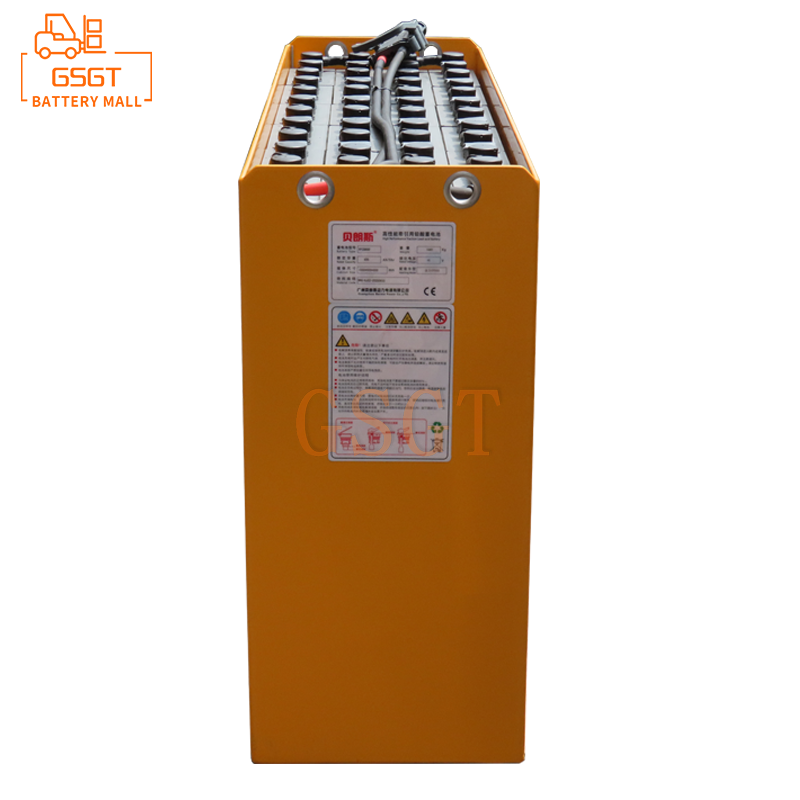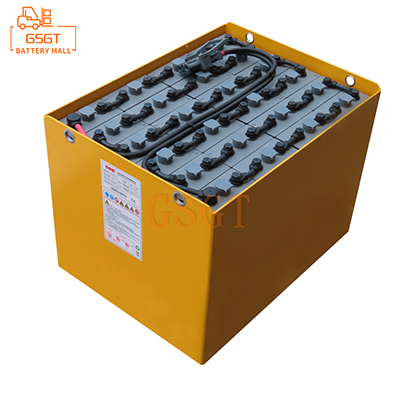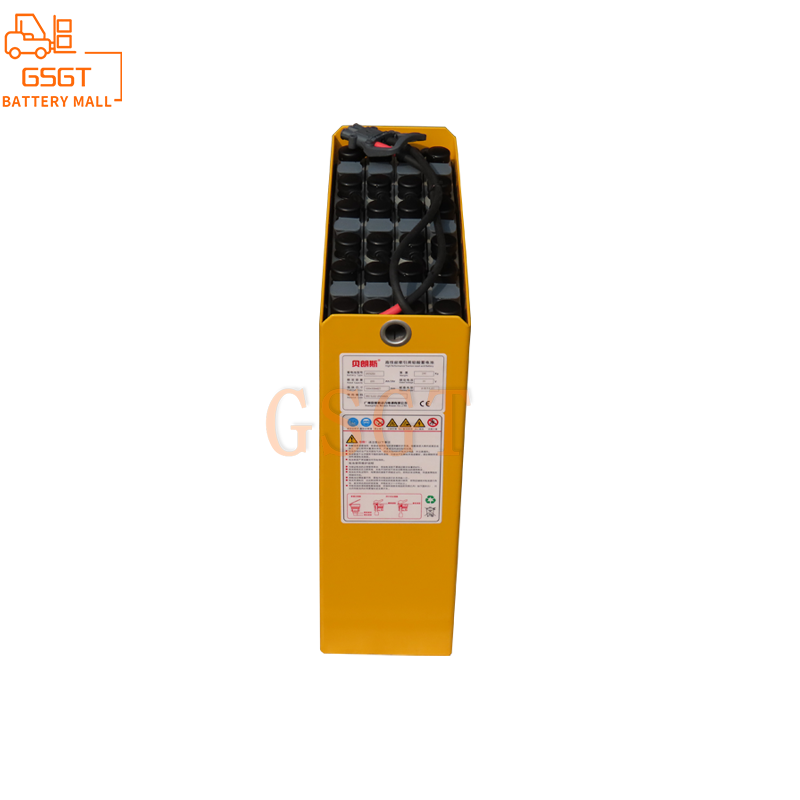Time:2025-04-14 09:52:56
Browse:563
In the modern logistics storage system, forklift bears the core handling function, and its operation efficiency is closely related to the operating cost and the performance of the power source. As a mainstream power choice, forklift traction battery has long been constrained by technical problems such as long charging time and short cycle life. Breaking through these bottlenecks and achieving high efficiency has become the key to industry upgrading, which directly affects the process of transformation and upgrading of the logistics industry and sustainable development.
Extend cycle life: reduce long-term use costs
Cycle life refers to the number of cycles when the battery is charged and discharged to a certain degree of capacity attenuation under certain conditions. Forklift traction batteries are frequently used, and if the cycle life is short, the batteries must not only be replaced frequently, leading to a substantial increase in operating costs, but also produce a large number of waste batteries, which brings a heavy burden to the environment. To prolong cycle life, battery structure design and management system optimization are two aspects. In the structural design, a more stable coating is added to the electrode material to prevent corrosion and peeling of the electrode during charging and discharging, so as to maintain the stability of the battery performance. At the same time, the battery management system (BMS) is upgraded to accurately monitor the battery's voltage, current, temperature and other parameters, and flexibly adjust the charging strategy with the help of intelligent algorithms to eliminate overcharge, overdischarge and overheating of the battery, effectively extending the battery cycle life. Today, some advanced lead-acid batteries can reach 1500-2000 cycles, and lithium-ion batteries are more than 3,000 times, significantly reducing the cost of forklifts.
Intelligent management: Give the battery "smart brain"
With the rise of the Internet of Things and big data technology, the intelligent management of forklift traction batteries has become a new path to break through the technical bottleneck. Sensors are embedded in the battery to collect real-time battery status data and upload it to the cloud platform. With the help of big data analysis and artificial intelligence algorithms, the remaining power and health status of the battery can be accurately predicted, and potential faults can be detected in advance to achieve preventive maintenance. For example, when the system detects an abnormal voltage of a battery unit, it will immediately issue an alarm to remind the staff to overhaul and nip the fault in the bud. Moreover, the intelligent management system can dynamically regulate the battery output power according to the working scene and load of the forklift, achieve efficient use of energy, and further improve the overall efficiency of the forklift.
Optimized heat dissipation design: Ensure stable operation of the battery
The operating environment of forklift truck is complex and changeable, and the battery will generate heat during charging and discharging. If the heat dissipation is not timely, the battery temperature is too high, not only will accelerate the aging of the battery, shorten the cycle life, but also may cause safety accidents. Therefore, optimizing heat dissipation design is very important for forklift traction battery. Air cooling, liquid cooling or a combination of the two cooling methods can be used. Air cooling has a simple structure and low cost, and takes away heat through the forced air flow of the fan, but the heat dissipation efficiency is relatively limited, and it is suitable for forklift batteries with small power. Liquid cooling is more efficient, using coolant to circulate inside the battery to bring heat out and distribute it to the external environment. In some large forklifts and high-power operation scenarios, the liquid cooling system can better maintain the stable temperature of the battery to ensure the performance and safety of the battery. At the same time, the reasonable design of the battery box structure and the increase of the heat dissipation area such as the heat dissipation fin can also effectively improve the heat dissipation effect and ensure that the battery can run stably under various working conditions.
Adaptable to diverse application scenarios: customized solutions
Different industries and different operation scenarios have different needs for forklifts, which requires the forklift traction battery to have diversified adaptation capabilities. For example, in a cold storage environment, low temperature will significantly affect battery performance, and ordinary batteries may have problems such as capacity attenuation and reduced charge and discharge efficiency. In response to this situation, cold-resistant batteries are developed, electrolyte formula is optimized, and special insulation materials are used to wrap the battery to improve the performance stability of the battery in a low temperature environment. In ports, mines and other heavy-duty, high-load operation scenarios, forklifts need to output powerful power instantaneously, which requires the development of high power density, deep cycle performance of good batteries, to meet the long-term, high-intensity operation needs. Through customized solutions, forklift traction batteries can play the best performance in various complex scenarios and expand their application boundaries.
Improve battery safety: Build a strong security line
Forklift operation environment is complex, the safety of the battery is very important. On the one hand, starting from the battery material, the development of non-flammable, good thermal stability of electrode and electrolyte materials. For example, some new lithium iron phosphate materials are structurally stable at high temperatures and have a low risk of thermal runaway. On the other hand, in the battery pack design, add multiple physical protection structures, such as the use of flame retardant shell, explosion-proof valve and so on. Once the internal pressure of the battery rises abnormally, the explosion-proof valve can open the pressure relief in time to prevent the battery from exploding. At the same time, the battery management system (BMS) also shoulders the safety responsibility, real-time monitoring of the battery temperature, voltage, current and other parameters, once detected abnormal, immediately cut off the circuit to prevent further deterioration of the dangerous situation. Through the collaborative improvement of materials, structure and management system, the safety of forklift traction battery is improved in an all-round way to escort forklift operation.
Strengthen recycling and reuse: Practice green development
With the increase of the use of forklift traction batteries, the disposal of waste batteries has become an environmental problem that cannot be ignored. The establishment of a perfect recycling system and the centralized recycling of waste batteries can avoid the pollution of heavy metals and chemicals in batteries. In the recycling process, advanced physical and chemical separation technology is used to efficiently recycle various metals (such as lead, lithium, cobalt, etc.) and other valuable materials in the battery. These recycled materials can be reused for battery production, forming the recycling of resources, reducing the dependence on native mineral resources, and effectively reducing battery production costs. For example, recycled lead can be used to produce new lead-acid batteries, and recycled lithium can be used to make lithium-ion batteries. Strengthening battery recycling and reuse not only conforms to the concept of green development, but also provides strong support for the sustainable development of the battery industry.
Conclusion
Forklift traction battery to break through the technical bottleneck, to achieve high efficiency, is a complex project involving materials science, electrochemistry, electronic technology, information technology and other disciplines. From increasing energy density and accelerating charging speed, to extending cycle life, realizing intelligent management, optimizing heat dissipation design, adapting diverse scenarios, and improving safety and strengthening recycling, breakthroughs in each link cannot be achieved without continuous scientific research investment and innovative practice. With the continuous progress of technology, high-efficiency forklift traction batteries will bring revolutionary changes to the logistics and warehousing industry, improve operational efficiency, reduce operating costs, promote the industry towards the direction of green, intelligent and efficient, play an irreplaceable key role in the future logistics development pattern, and inject strong impetus for the upgrading of the global logistics industry.

$1105

$3810

$3405

$1270

MESSAGE
Professional And Efficient
Security
Affordable Price
Professional Services